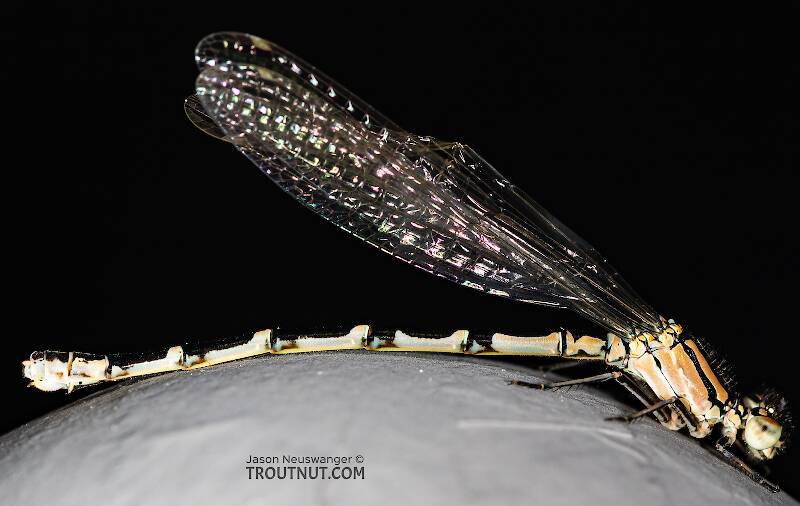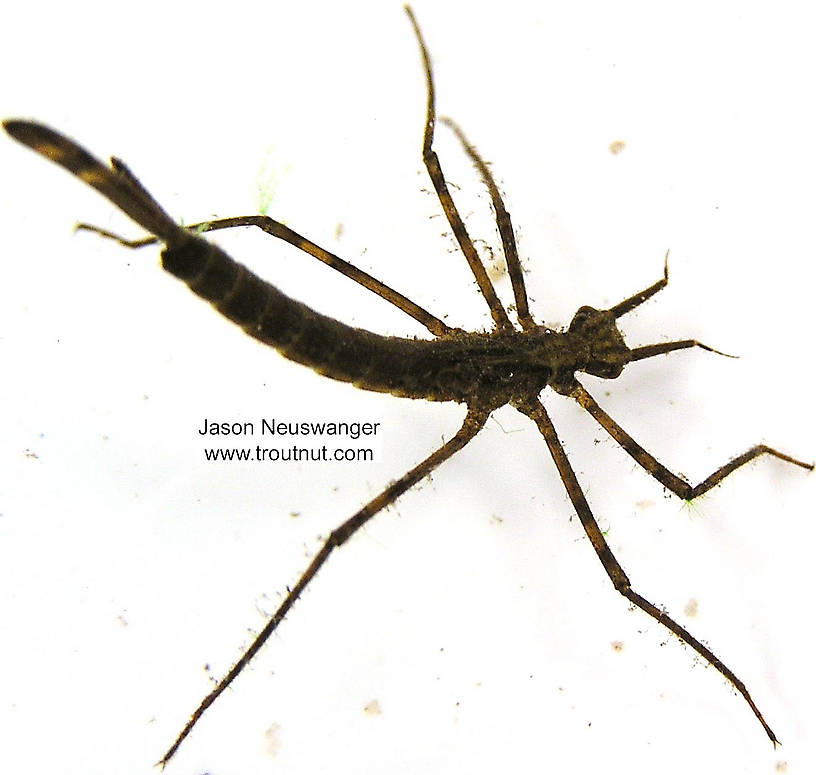
Salmonflies
Pteronarcys californica
The giant Salmonflies of the Western mountains are legendary for their proclivity to elicit consistent dry-fly action and ferocious strikes.
Featured on the forum

This wild-looking little thing completely puzzled me. At first I was thinking beetle or month larva, until I got a look at the pictures on the computer screen. I made a couple of incorrect guesses before entomologist Greg Courtney pointed me in the right direction with Psychodidae. He suggested a possible genus of Thornburghiella, but could not rule out some other members of the tribe Pericomini.

Troutnut is a project started in 2003 by salmonid ecologist Jason "Troutnut" Neuswanger to help anglers and
fly tyers unabashedly embrace the entomological side of the sport. Learn more about Troutnut or
support the project for an enhanced experience here.
Damselflies
Damselflies mirror the closely related dragonflies (scientifically, they are different suborders of the order Odonata) in that the adults are excellent at flight and only the nymphs are likely to fall prey to trout. Their nymphs differ in the way they look, move, and respirate, but they share the same alpha predator status in the world of aquatic insects.
This common name refers to only one order. Click its scientific name to learn more.
Insect Order Odonata-Zygoptera
These are pretty much always called Damselflies.
Beautiful damselflies are a priceless part of a trout stream's aesthetics, but they matter little to our flyboxes. The adults are too good at flying to end up in the water where the trout can reach them very often, but their nymphs are welcome prey at times.
Damselflies and dragonflies are in the same order, Odonata, but they are taxonomically separated on an obscure level not built into this site, the suborder. Damselflies are in the suborder Zygoptera, the scientific name by which they're most known. None of that will help you catch trout, but it explains what the hyphen in this page's title is all about.
Biologically, damselflies are similar to dragonflies (Odonata-Anisoptera) in most of the ways that matter to the angler.
Damselflies and dragonflies are in the same order, Odonata, but they are taxonomically separated on an obscure level not built into this site, the suborder. Damselflies are in the suborder Zygoptera, the scientific name by which they're most known. None of that will help you catch trout, but it explains what the hyphen in this page's title is all about.
Biologically, damselflies are similar to dragonflies (Odonata-Anisoptera) in most of the ways that matter to the angler.
See 6 more specimens...



